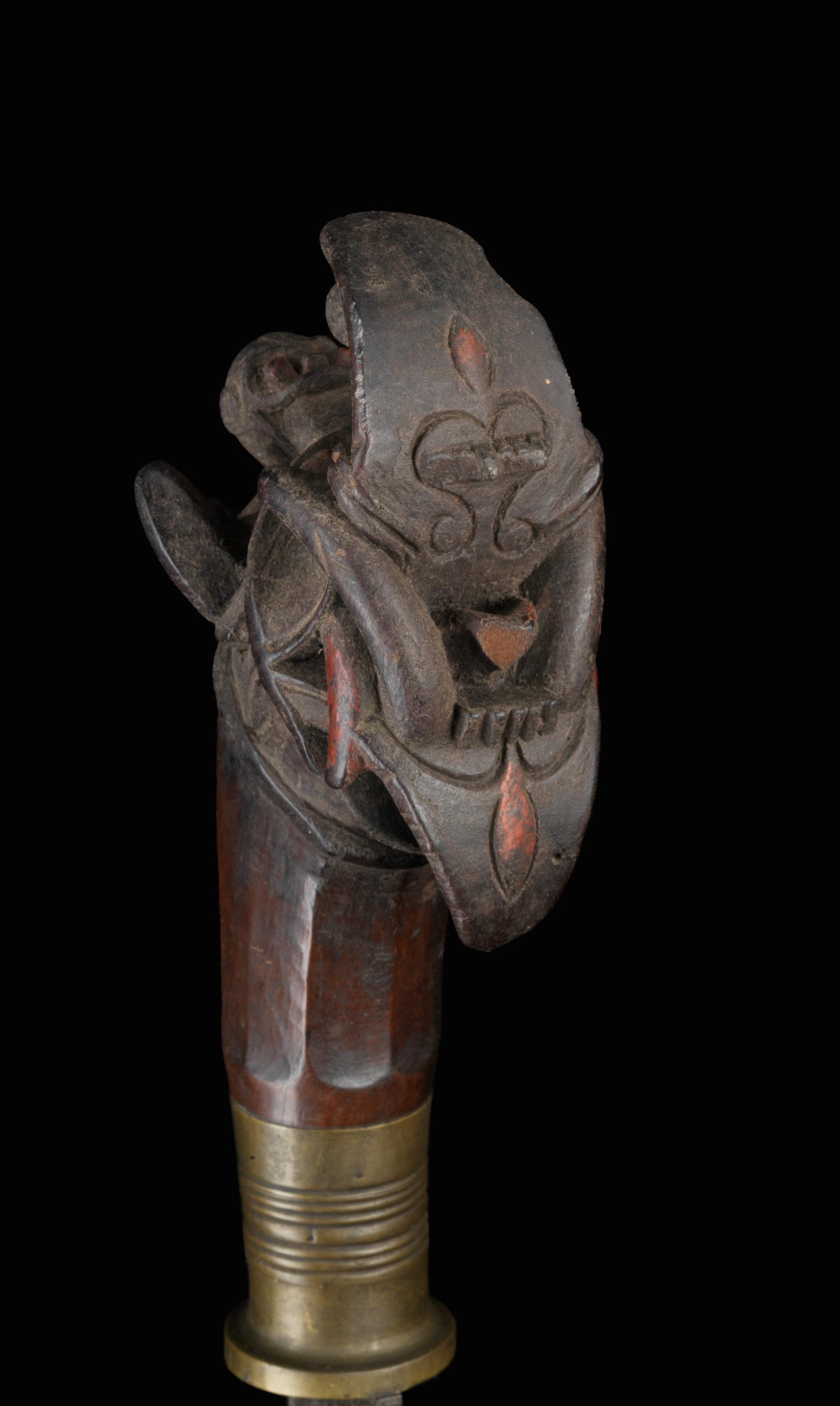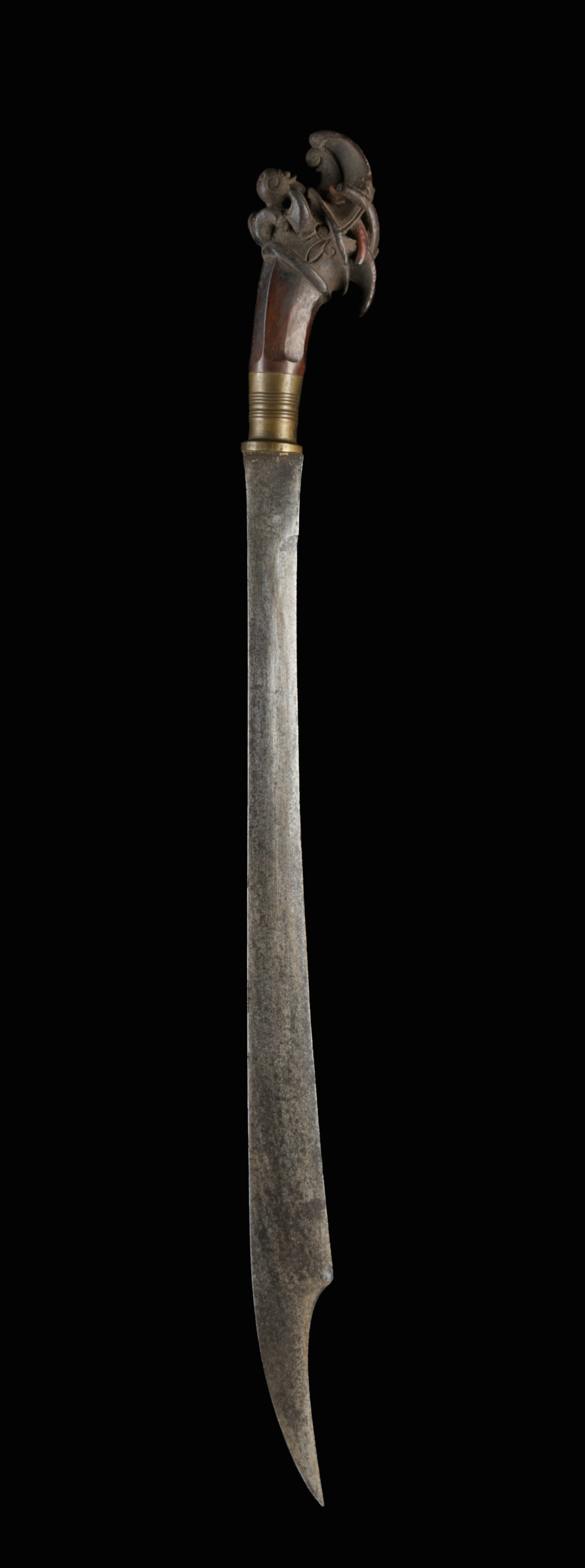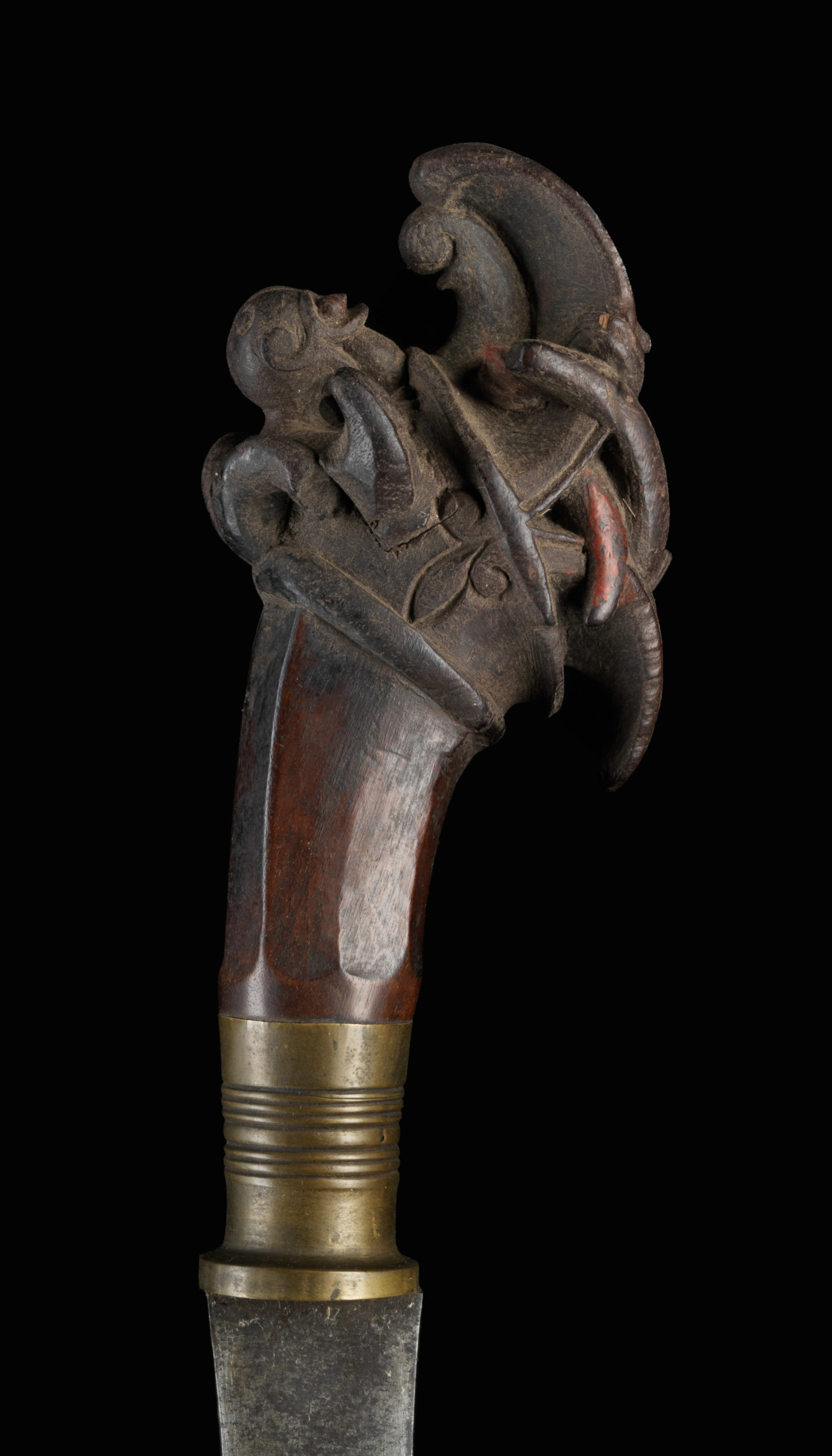Sword „balato“
A balato is usually made up of four parts: the blade, a hardwood handle (rare horn, very rare metal) with a figural design of the clearly enlarged pommel, a brass ferrule and the scabbard. The term balato for Niasian swords is probably derived from pou-la-tou, which is used by Ma Huan for the keris on the occasion of his visit to Java (Majapahit) around 1420, but has probably existed for a longer time. Tou corresponds to dao, which means knife or single-edged (cutting) sword. Other terms that are conceptually related to balato are beladau (a sword from East Indonesia; Sulawesi and Moluccas) or belote. Blade objects of this kind are found only on Nias and have unmistakable characteristics.
The smaller figure crouching on the lasara, sometimes resembling a monkey, is bekhu or bechu zocha, “the spirit that hunts the shadow of man”. On Nias, the shadow is the spiritual alter ego of (the shadow casting) man. Since the bechu is bloodthirsty by nature, his presence is said to increase the owner’s martial potency, according to Brenner-Felsach (1998: 174). According to some authors, the bekhu can possibly also be interpreted as a monkey. Monkeys were considered to be ominous and have recently been used as representatives of humans in sacrifices. Bekhu means demon or evil spirit in a broader sense. It is said to tame the power of lasara.
| Object | Sword, “balato” with “lasara” handle |
| Culture | Nias |
| Time | Around 1900 |
| Dimensions | Length 65 cm |
| Material | Steel, wood, brass, pigments |






